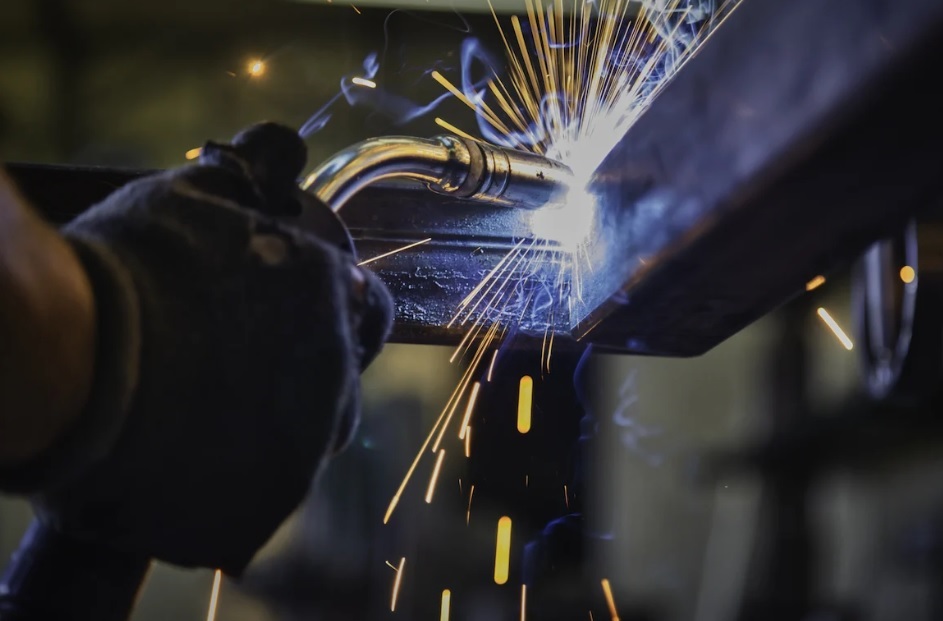Introduction: Welding VS Bolting
Time to explore how welding and bolting procedures are different! We know that both of them are popular techniques. But the welded joints look stronger and firm enough than bolted joints. In addition, the welded joints material does not have any perforations.
Here on this platform, we have penned further explanations about these techniques; you can check out the details. Overall, it is generally assumed that welded joints display high strength and bolted joints offer a simplistic mechanism.
The Basic Difference Between Welding VS Bolting
Both of these processes are utilized to join metals or thermoplastics. But the way they make joints, that technique makes them different!
The welding process involves fusing and joining two elements. In this respective technique, extreme heat and temperature settings are needed. Once you have joined the two elements, let them cool for some time. Especially construction industry personnel opt for welding methods.
The bolting process use fasteners to make joints! The fasteners hold structural elements right at their specific position, and later on, they are further secured with the help of screw threads. There are two types of bolted joints: shear and tension. The engineering sector excessively opts for bolting methods.
All About Welding
Various welding types are there, and the common ones are shielded metal arc welding, which is popularly known as arc or stick welding. Then we have gas metal arc welding MIG and tungsten inert gas welding TIG. All of these types differ slightly in terms of current and polarity. Furthermore, every welding method utilizes an electrical arc for properly melting the base material and joining it with perfection with another metal via adding filler metal.
Pros of Welding
- The joints made through welding look stronger, firmer, and long-lasting.
- The overall strength of welded joints looks tougher and sturdier than soldering, bolting, and brazing.
- The bond between the two welded joints will never be negatively impacted for years and years.
Cons of Welding
- Learning the welding skill seems a tough and challenging task.
- A slight error while making a welded joint will ruin the quality of the whole weld.
- Removing the welded joint is a time-consuming process. This respective process is done with an angle grinder, or you can opt for carbon arc gouging. However, the process of removing welded joints remains costly and time-consuming.
- Though welding strengthens joints, if you use the materials disproportionately, this will ultimately weaken the base material.
All About Bolting
A bolt comprises machine threads, and they remain securely fastened right inside a nut or interlocking threads. You might have come across a wide type of fasteners and bolts. Besides, you can have thread-locking bolts ranging from semi-permanent to fully permanent, and every bolt type varies in strength.
Pros of Bolting
- Bolts offer extreme versatility. A range of bolt types are available in the market, and you can choose the one that suits your project needs.
- Bolting seems preferable when you want to fasten and secure two parts together but not on a permanent basis.
- This technique does not require extensive and pro-level skill, likewise needed for welding.
- Drilling holes and fastening bolts at home do not need professional assistance, and you can easily perform this task independently.
Cons of Bolting
- You need to replace the bolts after some time because they wear out and lose their quality and durability. For example, bolts found in safety gates have to get replaced the minute you notice that they have become loose.
- It is sometimes tougher and very time-consuming to replace bolts and screws. Bolts have threads stripped during the process of installation, and they eventually become problematic to remove. Such a situation usually occurs when you have used bolts made of stainless steel.
In-depth Comparison of Welding VS Bolting
Below you can check out some more in-depth comparison on welding and bolting:
Which Is a More Cost-Friendly Technique? Bolting
Welding is a costly process and bolting is a cost-friendly method. However, the actual price varies project by project. We have seen that the price of bolted joints remains more sensitive concerning steel prices. But the manufacturing process cost is less expensive.
Welding looks like an expensive process because certified welders are needed to perform any welding technique. They charge high hourly rates.
Which Method Shows Better Structural Performance? Welded Joints
Welded joints show better structural performance than bolted joints. Moreover, the welded joints material does not carry any perforations. It is all about the manufacturing process that makes the welded joints look stronger. On the other hand, bolted joints offer slightly less structural performance and more simplicity.
Which Technique is Difficult To Inspect? Welding
Welding demands in-depth, thorough, and 360-degree inspection. It is a must to carry out the visual inspection pre and post and even during the welding. In addition, you need specialized equipment and AWS-certified inspectors.
Which Joints Are Flexible? Bolting
Bolted joints look more flexible, and welded joints are excessively rigid. It is usually noticed that bolted joints remain connected via plates and the deflection of elements adds extreme flexibility to the joints. Thus, bolted joints allow more elasticity, movement, and flexibility, along with less structural stress.
Conclusion
Now, you know the in-depth comparison of welding and bolting. Both of these techniques have their pros and cons. However, according to a large number of experts, welded joints remain stronger and show more advanced structural performance than bolted joints.
Bolting is a simple process that needs screws and fasteners, and you do not require hi-fi skills to learn this technique. But welding needs certification, extensive practice, and excessive hands-on training.
Overall, choosing the respective technique depends on the kind of project you want to carry out. Please stay connected with us, sooner more interesting facts on welding and bolting will be shared on this platform.
